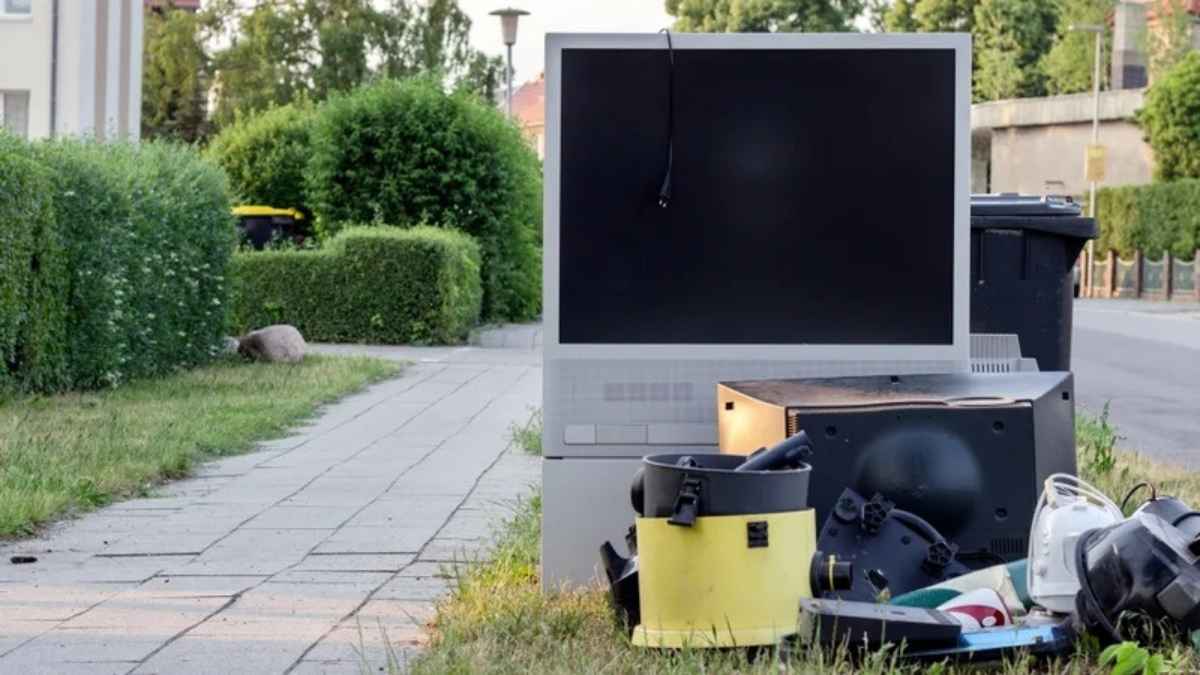Every year, countless televisions reach the end of their life cycle, leaving owners puzzled about how to dispose of them. When you schedule a tv recycling pickup, it begins an eco-friendly journey that transforms potentially hazardous waste into valuable resources. Understanding the meticulous process that your TV undergoes after leaving your home provides significant insight into the profound environmental and economic impacts of electronic recycling. As awareness of sustainable practices intensifies, comprehending these processes becomes crucial for individual and community action against e-waste.
In this comprehensive guide, we delve into the lifecycle of a recycled television. This journey is not only about responsibly discarding obsolete devices; it is a part of a collective effort to mitigate the environmental impact of electronic waste. It highlights the importance of embracing recycling as a responsibility and a pivotal component of living sustainably in an ever-advancing technological world.
Key Takeaways:
- Learn about the detailed process after your TV is picked up for recycling.
- Discover the environmental benefits gained from responsible electronic disposal.
- Understand how recycled materials contribute to sustainable manufacturing practices.
- Explore community benefits and regulations tied to TV recycling.
Initial Steps in the TV Recycling Process
Recycling begins when you decide to part with your old TV, opting for a responsible disposal method. After scheduling a pickup, the service organizes the safe removal of your television and transports it to a qualified recycling facility. These facilities are pivotal, equipped with cutting-edge technology designed to handle a variety of electronics, thereby mitigating potential environmental harm. Preparation involves compiling detailed inventories to track the types of televisions they receive, which facilitates efficient processing by categorizing units based on their component materials.
Initiating the recycling process is an integral step in managing electronic waste, as it extends beyond merely discarding an old device—it steps into the realm of conscientious waste management and environmental preservation.
Collection and Transportation
The logistics of gathering and moving old televisions from collection points to recycling facilities entail precise planning. Electronic devices contain fragile components and potentially hazardous materials, necessitating special care during transport to prevent accidents or leaks. Trucks made for this purpose ensure TVs arrive intact and unharmed, ready for the next recycling stage. This meticulous approach also limits the accidental release of toxic substances into the environment.
Collection services often serve as educators, informing consumers about best practices in e-waste management. This aspect underscores the idea that responsible recycling starts with informed consumers choosing reputable services to ensure that their electronic waste is managed sustainably from start to finish.
Dismantling and Separation
Upon arrival at the recycling facility, the dismantling phase begins. Skilled technicians, employing both manual techniques and sophisticated machinery, break down the TVs into their primary components—plastics, glass, metals, circuit boards—and separate them for further processing. This stage balances labor intensity and technological intervention to maximize efficiency and safety.
Separation of Hazardous Materials
During this critical phase, hazardous components like cathode ray tubes (CRTs) are precisely isolated. Containing significant amounts of lead, CRTs require specialized handling to ensure they do not become environmental pollutants. Facilities employ advanced filtration and containment technologies to prevent lead and mercury contamination. Comprehensive training and stringent safety protocols are embedded across the recycling workforce to uphold these endeavors.
Understanding and adhering to these practices avoid the potential risks associated with improper e-waste handling, highlighting recycling companies’ need to maintain robust operational standards.
Material Recovery and Processing
With components efficiently separated, the next stage involves recovering and processing these materials. Metals are melted down, plastic components are shredded, and glass is ground into a usable form, each material finding a new purpose in various sectors. These materials are meticulously refined, ensuring impurities do not compromise their quality, and are then ready to be reintegrated into manufacturing cycles.
By enabling the reuse of electronic materials, recycling reduces demand on raw resources, conserving energy and minimizing the carbon footprint associated with new material extraction and processing. This circular usage model exemplifies the significant role of recycling in sustainable resource management.
Environmental and Community Benefits
Television recycling extends numerous ecological and societal benefits. By restraining hazardous waste, recycling facilities prevent considerable soil and water contamination—crucial for maintaining biodiversity and public health. These efforts align with the broader mission of reducing environmental impact, highlighting how the recycling industry supports global sustainability goals.
Communities benefit economically from job creation in the growing recycling sector. Additionally, well-managed recycling operations can reduce public cleanup costs and increase local economic activity, underscoring recycling as an environmental necessity and a community building block.
Regulatory Compliance and Safety Standards
Stringent regulations govern electronic waste recycling to ensure operations do not harm human health or the environment. Regulatory frameworks encompass guidelines for handling hazardous materials, occupational safety measures, and environmental protection standards. Compliance is critical, and operators face significant penalties for regulatory violations. These regulations reflect society’s expectations for responsible e-waste management and reinforce the importance of regulation in protecting our world’s health.
Impact of Using Recycled Materials
Integrating recycled materials into manufacturing chains delivers substantial environmental benefits. Using recycled raw materials means lower extraction rates from natural environments, lessening ecological disruption. Regarding environmental impact, utilizing recycled rather than virgin materials can drastically reduce energy consumption and greenhouse gas emissions, as producing raw materials from scratch often requires significantly more energy than processing recycled ones.
Recycling an obsolete television contributes to the broader narrative of embracing sustainability. This decision supports a future where resource utilization is tuned to reduce environmental strain, embodying the responsible practices that ensure a healthier planet and a more informed society.

